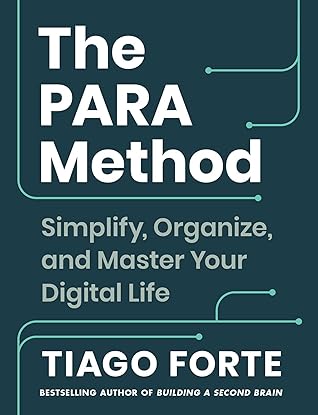More on this book
Community
Kindle Notes & Highlights
by
Tiago Forte
Read between
September 22, 2023 - May 5, 2024
The only reward from reading a book like this one comes from putting what you learn into practice, and you can do that after you’ve read just the first five chapters.
PROMISE #1: You will stop wasting time looking for information: You will know exactly where your most important notes and documents live, and how to find them in seconds.
PROMISE #2: You will gain greater focus on what matters most: You will have greater clarity about what’s important so you can intentionally move your life into alignment with your interests and goals.
PROMISE #3: You will make things happen: You will consistently finish what you start, beating procrastination and tapping into your past learning to make progress fast.
PROMISE #4: Your creativity and productivity will soar: You will have access to a playground of your own ideas to finally do the creative work that’s been locked up inside you.
PROMISE #5: You will beat information overload and FOMO: The fear of missing out on a key piece of information will disappear and be replaced with the confidence that you have everything you need to get started.
Four Categories to Encompass Your Entire Life
You have projects you’re actively working on—short-term efforts (whether in your work or personal life) that you take on with a certain goal in mind.
You have areas of responsibility—important parts of your work and life that require ongoing attention more broadly.
Then you have resources5 on a range of topics you’re interested in and learning about, such as:
Finally, you have archives, which include anything from the previous three categories that is no longer active but you might want to save for future reference:
The system you use to organize information has to be so simple that it frees up your attention, instead of taking more of it. Your system must give you time, not take time.
The Key Principle—Organizing Information by Your Projects and Goals
Instead of organizing information according to broad subjects like in school, I advise you to organize it according to the projects and goals you are committed to right now. This is what it means to “organize for action,” a mantra I will return to throughout this book.
OBSTACLE #1: You Can’t Truly Know the Extent of Your Commitments
OBSTACLE #2: You Can’t Connect Your Current Efforts to Your Long-Term Goals
One of the most challenging (yet also rewarding) aspects of knowledge work is that it requires our creativity. And creativity can’t really be sustained without a sense of motivation. You can’t keep doing your best thinking and contributing your best ideas if you’re burned out and demoralized. What does our motivation depend on? Mostly, on making consistent progress. We can endure quite a bit of stress and frustration in the short term if we know it’s leading somewhere.
Which brings us to our second problem: without a list of individual projects, you can’t connect your current ...
This highlight has been truncated due to consecutive passage length restrictions.
When you break down your responsibilities into bite-size projects, you ensure that your project list is constantly turning over. This turnover creates a cadence of regular victories that you get to celebrate every time you successfully complete a project. Imagine how motivated and accomplished you’d feel by breaking out a broad area like “Events” into each individual event you’re organizing:
No matter how wide-ranging your responsibilities are, you can always break them down into smaller projects… …
and you must, if you want to know whether you’re actually making progress toward your goals.
So much of what we call “organizing” is essentially procrastination in disguise. We tell ourselves we’re “getting ready” or “doing research,” pretending like that means progress.
In reality, we are seeking any little thing we can polish or tidy to avoid having to face the task we are dreading.
PARA cuts through this facade, giving us a method for organizing anything that is so radically simple, there is no excuse and nothing left to do except the next essential step. It is a minimalistic way to add just enough order to your environment that you have the clarity to move forward, and no more.
Before you can create anything new, you have to clear out the old.
In this chapter, I’ll walk you through the three steps I recommend you take to adopt PARA on any digital platform: Step 1: Archive existing files Step 2: Create project folders Step 3: Create additional folders as needed
The problem with keeping everything is that it quickly starts to consume a resource even more scarce than physical space: your attention.
You can keep everything, but you can’t keep it front and center in your attention. It needs a place to go for safekeeping—one that is secure but completely “out of sight, out of mind” until you need it.


